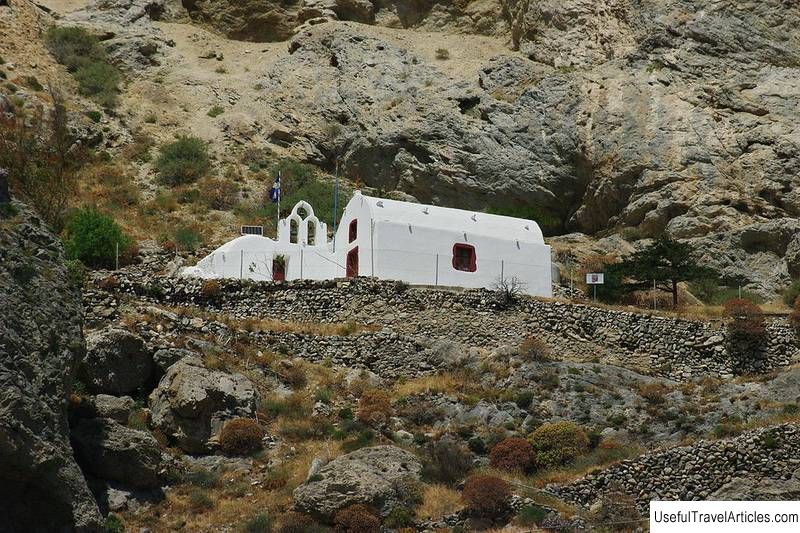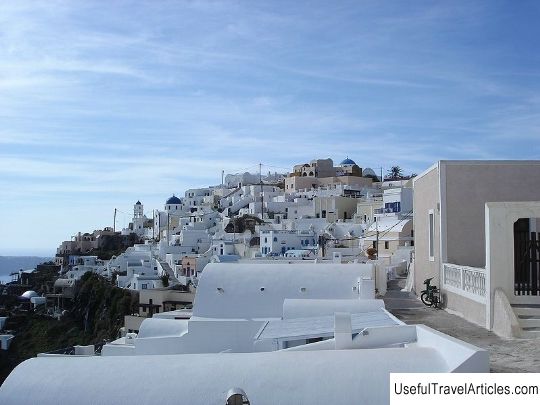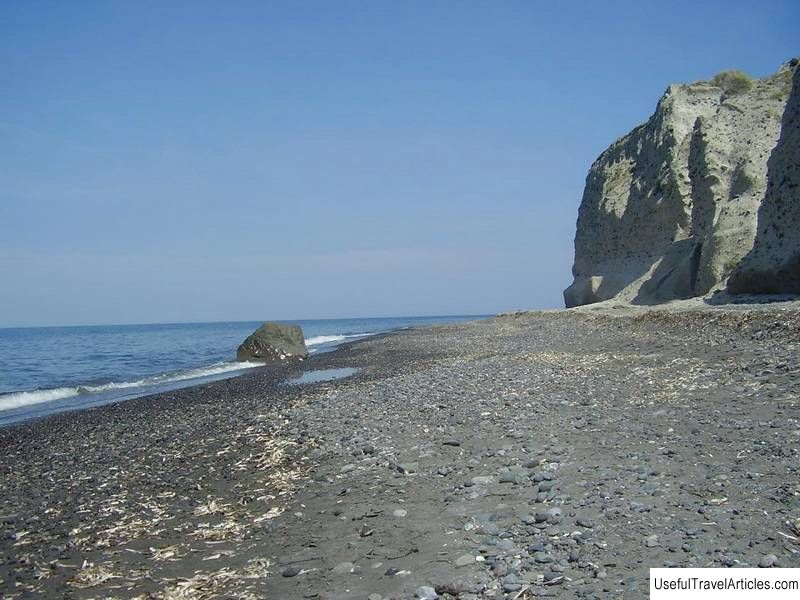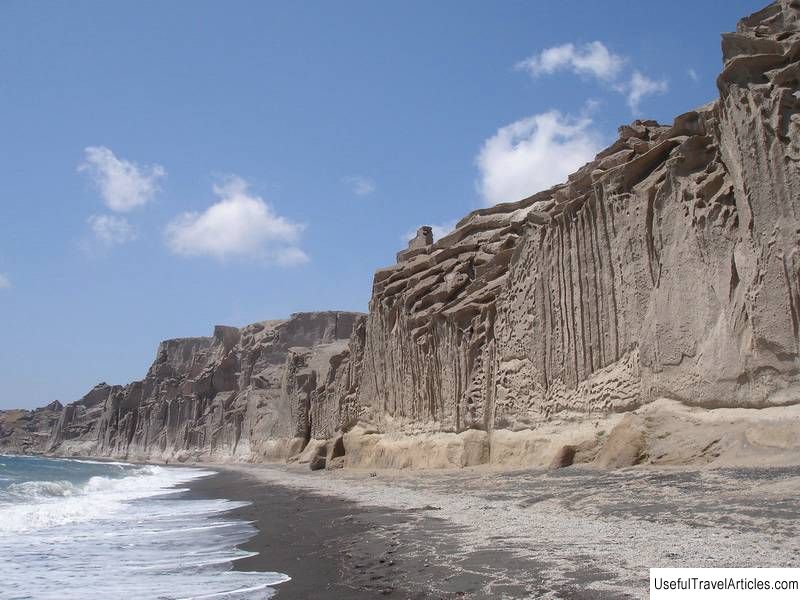Volcano Thira (Santorini caldera) description and photos - Greece: Santorini Island (Thira)
Rating: 9,5/10 (1504 votes) 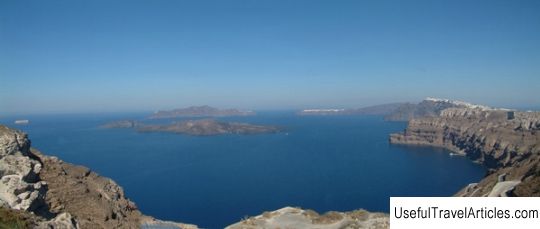
Thira volcano (Santorini caldera) description and photos - Greece: Santorini Island (Thira). Detailed information about the attraction. Description, photographs and a map showing the nearest significant objects. The name in English is Santorini caldera. Photo and descriptionIn the Aegean Sea there is a small ring-shaped group of volcanic islands called Santorini (Thira). In ancient times, there was a single rounded island, probably called Strongila, in the middle of which there was a huge mountain 1.5 km high - an active volcano. Approximately 3500 years ago, there was a powerful volcanic eruption (up to 7 points), which is considered the largest in the history of the earth. The colossal explosion led to the fact that a huge hollow space was formed in the crater of the volcano, the walls of which collapsed under their own weight, and a huge caldera was formed (diameter 14 km, and the height of the walls in some places reaches 400 m). The caldera was flooded by the waters of the Aegean Sea. The surface of the earth not submerged was completely covered with volcanic lava and ash, traces of which were also found on the island of Crete, the coastal zones of northern Africa and Asia Minor. It is believed that the locals managed to leave the island, since during the excavations near Akrotiri, no unburied human remains or any gold and other valuable items were found. The volcanic explosion also provoked a powerful tsunami up to 100 m high, which covered the northern coast of Crete, and also destroyed many settlements in the Aegean Basin and the Mediterranean coast. After that, the Minoan civilization fell into decay, although, according to some reports, it still existed for some time. There is also a hypothesis that it was the eruption of the Santorini volcano that led to the death of the legendary Atlantis. There is no reliable evidence of this today. Today, the volcano Thira (Santorini) is at rest, but, nevertheless, remains active. The last major earthquake shook Santorini in 1956.            We also recommend reading Komsomolsk park description and photo - Russia - Caucasus: Pyatigorsk Topic: Volcano Thira (Santorini caldera) description and photos - Greece: Santorini Island (Thira). |

